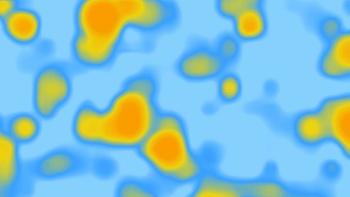
Misdiagnosing macular degeneration
A number of macular conditions either mimic or share characteristic findings of age-related macular degeneration (AMD). These resemblances can result in tough clinical decisions and misdiagnosis. Although genetic testing can be helpful, tests are limited by both their efficacy and accuracy.
A number of macular conditions either mimic or share characteristic findings of age-related macular degeneration (AMD). These resemblances can result in tough clinical decisions and misdiagnosis. Although genetic testing can be helpful, tests are limited by both their efficacy and accuracy.1 It is also possible for a patient with positive genetic predisposition to or diagnosis of AMD to suffer from a coexisting disease.
Clinical findings and diagnostic imaging direct clinicians toward a differential diagnosis. A number of these characteristics will be reviewed here by presenting cases of misdiagnosis.
More from Dr. Rafieetary:
Case 1
A 64-year-old Caucasian female was referred for wet AMD. The patient complained of gradual worsening near vision in both eyes. Her ocular history was unremarkable. She was diagnosed with type 2 diabetes one month before her appointment. Her best-corrected visual acuity (BCVA) OD was 20/20 and OD 20/60, and her anterior segment was significant only for 2+ nuclear sclerosis.
Fundus examination was remarkable for mild distortion of foveal light reflex and subtle pigment mottling temporal to fovea as shown in fundus photograph (Figure 1A). Fundus autofluorescence (FAF) demonstrated hyperautofluorescence in the area of pigmentary change (Figure 1B).
Optical coherence tomography (OCT) was remarkable for normal choroidal thickness, and outer-segment atrophy temporal to her foveas. OD exhibited a small area of juxtafoveal hyporeflectivity of the inner retina.
More from Dr. Rafieetary:
OS exhibited a juxtafoveal hyporeflective area in the outer retina with early internal limiting membrane (ILM) drape (Figure 1C). Fluorescein angiography (FA) was remarkable for staining of the retinal pigment epithelium temporal to fovea in both eyes with no evidence of choroidal neovascular membranes (CNV) (Figure 1D). In both OCT and FA, few small drusen were scattered within the posterior pole. Plan and follow up will be discussed below.
Does this patient have AMD?
Case 2
A 61-year-old white male was referred for wet macular degeneration. He complained of distorted vision OD for a few months leading up to his appointment. The patient was an airline pilot, and he was still able to fly safely. His medical and ocular history was unremarkable. His BCVA was OD 20/30 and OS 20/25. Anterior segment examination was normal except for 1+ NS OU. Fundus examination revealed mild retinal pigment mottling and serous elevation temporal to OS fovea and mild retinal pigment mottling temporal to macula (Figure 2A). Fundus autofluorescence showed areas of altered retinal pigment epithelium (RPE) OU. An area of chronic subretinal fluid OD was shown by dull hyper autoflourescence (Figure 2B). OCT showed serous detachment of temporal macula OD and in the papillomacular bundle, and pigment epithelial detachment inferior temporal to fovea OS (Figure 2C). Fluorescein angiography (Figure 2D) further demonstrated multiple areas of RPE damage OU without active leakage.
Does this patient have AMD?
Characteristics of AMD
Before assigning that diagnosis of AMD, you must consider its characteristics. The earliest findings in dry or atrophic AMD are drusen, which are yellowish to off-white in color and deposit either as basal laminar or linear deposits in the RPE.2 Although drusen are highly associated with AMD, they commonly occur in other conditions.
In early AMD, drusen are small and rare; however, as the condition progresses they become more numerous and larger in size. In the Age Related Eye Disease Study (AREDS), drusen were classified based on size.2 Those smaller than 63 µm were labeled as small, 63-125 µm were intermediate, and larger than 125 µm were large (Figure 3).
On OCT, drusen appear as bumps within the RPE, and they appear as hypoautoflorescent lesions on fundus autofluorescence (Figure 3). In angiography, drusen absorb the fluorescein dye and stain the surrounding tissue (Figure 4). With progression of the disease and further RPE damage, accumulation of the coarse yellow-brown pigment granules composed of lipid-containing residues becomes clinically visible as increased drusen number and size.
On OCT alteration of the RPE and on FAF, hyperautofluorescence is noted (Figure 5). In angiography, these areas demonstrate broader staining (Figure 5). As the disease progresses, further abnormalities of the RPE are noted followed by or accompanied with geographic atrophy (GA) with or without pigment epithelial detachments (PED) (Figure 6).
Although development of choroidal neovascular membranes (CNV) can occur at any time, the incidence becomes greater as the aforementioned clinical course progresses.2 Choroidal neovascularization can take many forms. A typical presentation of a classic CNV is shown in Figure 7.
Another factor that may be helpful is choroidal thickness. Sigler et al3 noted the median normal choroidal thickness of patients 65 and older with AMD to be 112 µm and 222 µm in age-matched patient without AMD.
Case 1 discussion
The patient in Case 1 has macular telangiectasia type 2, not AMD. Macular telangiectasia is a relatively common vascular abnormality which has come to recent prominence with the widespread use of OCT. Characteristics of type 2 macular telangiectasia include predominantly temporal foveal telangiectasic vessels with hyporeflective retinal cavities on OCT and eventual retinal atrophy.4 Fundi may also show deficiency in the critical retinal pigment molecules lutein and zeaxanthin.
This is best observed using fundus autofloursescence. Rarely, neovascularization can develop. If this occurs, treatment with anti-VEGF agents is indicated. In the absence of neovascularization, a reasonable course of action is careful monitoring and thorough counseling. Vitrectomy and ILM peeling,5 focal laser, and steroids have all shown no real benefit.3
In four years of follow-up, this patient’s VA has not significantly changed, although he subjectively has noticed a decline. His last BCVA were OD 20/20, OS 20/60. There was no significant change in clinical examination, including no progression of drusen.
On OCT, however, the right eye demonstrates increased outer retinal atrophy and a full-thickness macular hole and posterior vitreous detachment. The left eye showed increased outer retinal atrophy, vitreomacular adhesion, and a more prominent ILM drape (Figure 1E).
Case 2 discussion
The patient in Case 2 has central serous chorioretinopathy. This is a disease usually associated with relatively young type A personalities, but in reality it can be found across all ages and sexes. An excellent diagnostic tool would be enhanced depth SD-OCT imaging. If the choroid is of normal thickness, the patient probably does not have central serous chorioretinopathy. This condition can be observed if patient is asymptomatic or if the disease is foveal sparing. Currently, retina specialists are also employing a variety of oral medicines ranging from methotrexate to eplenerone. Success has been found but not on a consistent basis.
Related: N
Traditional treatments are still the mainstay, including photodynamic therapy (PDT) or focal laser. Guidance for treatment is provided using angiography, preferably with indocyanine green angiography (ICG). This patient had successful resolution of his subretinal fluid and increased BCVA following half fluence photodynamic therapy with verteprofin (Visudyne).
References:
1. Tuo J, Bojanowski CM, Chan CC. Genetic factors of age-related macular degeneration. Prog Retin Eye Res. 2004 Mar;23(2):229–49.
2. Age-Related Eye Disease Study Research Group. A randomized, placebo-controlled, clinical trial of high-dose supplementation with vitamins C and E, beta carotene, and zinc for age-related macular degeneration and vision loss. Arch Ophthalmol. 2001 Oct; 119(10): 1417–1436.
3. Sigler EJ, Randolph JC. Comparison of macular choroidal thickness among patients older than age 65 with early atrophic age-related macular degeneration and normals. Invest Ophthalmol Vis Sci. 2013 Sep 19;54(9):6307-13.
4. Charbel Issa P, Gillies MC, Chew EY, et al. Macular telangiectasia type 2. Prog Retin Eye Res. 2013 May;34:49-77.
5. Sigler EJ, Randolph JC, Calzada JI, Charles S. Comparison of observation, intravitreal bevacizumab, or pars plana vitrectomy for non-proliferative type 2 idiopathic macular telangiectasia. Graefes Arch Clin Exp Ophthalmol. 2013 Apr;251(4):1097-101.
Newsletter
Want more insights like this? Subscribe to Optometry Times and get clinical pearls and practice tips delivered straight to your inbox.








































